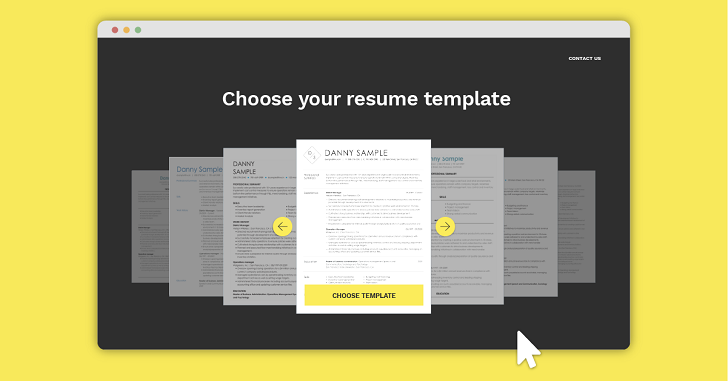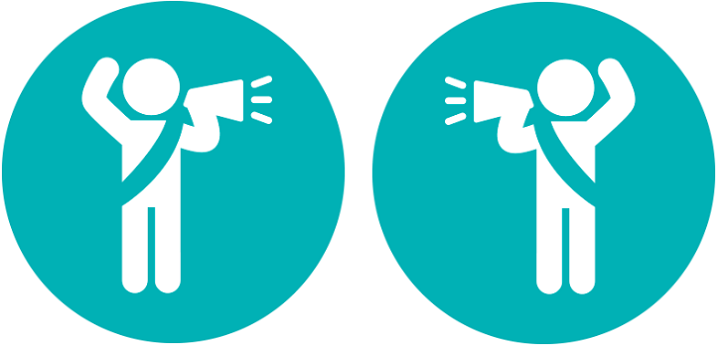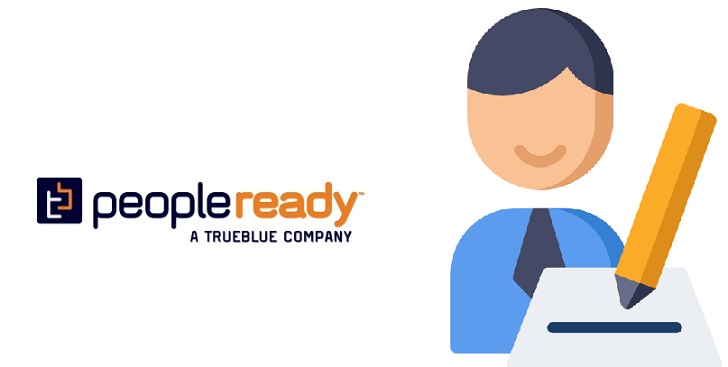How To Write A Good Resume
It is essential for every job-hunter to write the resume right in order to be one step closer to the dream job. A well-formed resume is a key to offers from many companies you wish to work. We should not underestimate the power of a good resume since it is the most direct tool telling your professional abilities to potential employers. The main purpose of a resume is to get you an interview so a well-arranged resume should highlight your most relevant skills and experiences. Additionally, it should be consistent and clear. It is likely that interviewers will ask questions based on what you write to your resume, so it is important for you that you know what to emphasize well. If you do not want to wait for months before you get a response, keep reading, and find out the key strategies to write a resume. In this guide, we are going to give every information you need to get noticed. Let’s get started!
Basic Steps Of Writing A Resume
Step 1: Choose The Resume Type
Step 2: Pick The Right Resume Format And Layout (Font and Size)
Step 3:Build Resume Content
Step 4: Start With Your Personal and Contact Information
Step 5: Decide on Resume Keywords
Step 6:Write a Resume Objective
Step 7: Make A List of Your Previous Work Experiences
Step 8:Vivify Your Job Descriptions and List Achievements
Step 9: List Education on Your Resume
Step 10: List your Soft and Hard Skills
Step 11: Include Additional Sections
Step 12: Tailor Your Resume For Each Job You Apply
Step 13: Proof Your Resume
Step 14:Download A Resume Template
Example Resume
1) Choose The Resume Type

There are several types of resumes that can be chosen according to your personal circumstances. These can be listed as reverse chronological, functional (skills-based), combination, or targeted resume. You need to be sure that you choose the right type based on the job you want to apply and your experience level. The reverse chronological resume is the most popular type since in %90 of the cases people use this format and human resources are used to it. Although in these guidelines we are going to stick to reverse chronological resume, it is good to know the others in case you need them. A reverse chronological resume focuses on your employment history. If you have an employment gap, lack enough or relevant work experience, or want to make a career change, you might want to consider a functional (skills-based) resume. If you are going to apply for a job that requires several specializations such as management, marketing, and finance, you should choose the combination resume format. We suggest you take your time and make the best decision according to your preferences and priorities.
2) Pick The Right Resume Format And Layout (Font and Size)
Nowadays there are many online resources that you can use in order to build your resume such as Resumecoach, Cvmaker, Zety, etc. You can easily find them on search engines. They will save you a lot of time because you do not have to change the entire format every time you want to edit a certain part of your resume. When it comes to your layout, the most important thing to decide is the length. Keep in mind that human resources departments receive thousands of resumes each month. If you want a second glance on your resume, keep it short! Nobody would want to go over your resume for hours in order to see your employment history. Then, decide on section headings and use the same clear heading for every section. Around the margins, use ample white-space. It is also important to choose the most appealing font (Ubuntu, Roboto, Overpass) and size (11 for normal text, 14 for titles) for sections. If you decide on a certain style, be consistent. For example, if the Soft Skills section is written in bold, the Hard Skills section should be the same. Try to save your resume in PDF format, you may also choose the Word format but keep in mind that it can ruin certain formats. Lastly, choose between traditional or modern looking resume. If you are going to apply for a job in a more creative industry, stick with the modern-looking resume. If you are going to apply for a Law office or engineering company, choose the traditional look.
3) Build a Resume Content
Let’s get started with the writing down. There are essentials sections for every good resume. They can be listed, keep in mind that it is not limited, as: Personal and Contact Information, Resume Objective, Work Experience, Education, Skills, Additional Sections. Don’t worry, we are going to walk you through every section.
4)Start With Your Personal and Contact Information
Let’s examine what you should or should not include in this section. You should definitely write your first and last name, phone number, e-mail address, and location. It is up to you to add title, LinkedIn profile, website, or personal blog. For instance, you can mention that you are a “Data Analyst” or “Compliance Officer”. It should be your word-for-word professional title. If you are going to add your Linkedin Profile, ensure that you write the updated link. Perhaps you are a designer, illustrator, or a blogger who owns his/her website. If you think it is going to add value to your resume, add the link! Now, let’s talk about the “Don’t”s of Contact Information. Unless it is required, do not write your date of birth. Most of the companies claim they are not ageist, but in reality, it might lead to discrimination based on your age. If it is not required, you do not have to add a picture. Your look is not more important than your experiences and skills. Lastly, make sure that your e-mail address looks professional. Do not send your resume through an unprofessional e-mail such as “badboy1988@gmail.com”.
5) Decide on Resume Keywords
You may ask yourself “Why do I need to spend my time on keywords?” Well, most companies today and probably every one of them in the near future is using Applicant Tracking System (ATS) which is a software to initially screen all the candidates to assist HR managers. In short, if you want to be evaluated by an HR specialist, first you need to convince ATS that you are a prospective applicant. Don’t get intimidated by a machine, because it is actually easy if you know what to do. You just need to read the job description carefully and match your qualifications with the description. Include the keywords used in the job description to your resume.
6) Write a Resume Objective
Did you know that an HR specialist only spends 7 seconds to check your resume? So first impressions mean a lot regarding the resumes. Resume Objective is placed at the top of your resume, just under your contact information. Resume Objective is just 2-3 sentences, however, you should be really careful with it. If you don’t have enough work experience (maybe you are a student or a recent graduate) you do not have to write a resume summary. Your resume objective should start with your professional job title and years of experience ( Ethnographic Marketing Researcher with 3 years of experience in building digital marketing strategies for cooperation). Then, you should include your core responsibilities, 1-2 of them would be more than enough (such as analyzing the customer behaviors in their natural environment and coordinating integrated marketing policies). Lastly, you should mention your goals (interested in applying my skills in analyzing in-depth consumer behaviors in e-commerce sites).
Examples of Resume Objectives: “Ethnographic Marketing Researcher with 3 years of experience in building digital marketing strategies for cooperations such as analyzing the customer behaviors in their natural environment and coordinating integrated marketing policies. I am interested in applying my skills in analyzing in-depth consumer behaviors in e-commerce sites.”
“Motivated recent graduate with M.A in Illustration from Politecnico di Milano School of Design seeking new opportunities. +2 years of experiences working with Adobe Illustrator CC and CorelDraw Graphics Suite. Looking to grow as a creative designer in advertising studios.”
7) Make A List of Your Previous Work Experiences
Great job! You have made it to the most crucial section in your resume. Work experiences section is not just about writing your position in a company, it is the place you should sell yourself and give details of your core responsibilities and past achievements. Firstly, start with your job title. Remember that it is the first thing an HR specialist sees when she/he glances at the section. Secondly, write your previous company’s name and location. Thirdly, describe your core responsibilities and achievements. Lastly, you should mention the dates employed. If you do not remember the exact date, write a close prediction. You should start with the most recent work experience, then list the previous ones. Check out this example:
Software Developer
Spotify , Dublin, Ireland
07/2016 – 09/2018
Responsibilities: Debugged errors in collaboration with testing teams.
Developed device adapter for storage systems.
Coded regression testing.
Contact: It is up to you to add a contact for each job, or you may attach your reference letters while submitting your resume. For example, Adrian James – adrian@spotify.ir
8) Vivify Your Job Descriptions and List Achievements
While writing your job descriptions, you should always ask yourself these two questions: “ Are my previous experiences appealing and impressive for the position?” and “Do I look like a good match for the position?”. Don’t fall for this mistake: Your responsibilities and job descriptions are quite different than your achievements. Keep in mind that every digital marketing specialists have similar responsibilities more or less. To stand out, you should mention your key achievements. Keep in mind that for some jobs it is quite hard to mention achievements, so it is okey if you can not come up with any. For the ones who can, let’s have a look at how to list achievements properly;
Let’s say that you are a Sales Manager. Generating sales is your responsibility, however, “increasing the sales %50 percent for 3 months straight” is your achievement. The key here is to quantify your accomplishments. Do not just write “increased sales.”
9) List Education on Your Resume
The next section is under the headline of “Education”. Let’s have a quick glance at what you should include while mentioning your educational background. You should definitely start with the program name (Bachelor, Master, or p.h.d), then move on with the university name. Finally, complete it with the years attended. It is up to you to add your g.p.a, honors, any relevant academic accomplishment, or minor degree. Let’s look at an example:
Education
MSC: European Studies
Middle East Technical University
09/2013- 09/2015
Do not forget to mention your recent education on top. You do not need to add your high school information if you hold a university degree. Remember to include your G.pa. İf it is impressive (3.50 and above). Otherwise, do not mention it at all. If you don’t have professional work experience, move the education section in the first place in your resume.
10) List your Soft and Hard Skills
The skills section is a must for every well-written resume. There are two types of skills; measurable (hard) skills and personal (soft) skills. There are three important points when you are listing your skills. Firstly, start with your hard skills with their experience level (Beginner, Intermediate, Advanced, Expert). For example, WordPress (Expert), SEO (Advanced), SEM (Intermediate). You should never lie about your skills because soon or later you will be asked to perform based on a skill you mention in your resume. It would be quite awkward if you can’t deliver the task as needed. If you have entry-level practice for a skill, you are a beginner. If you have used a skill in a work environment for several times, you are intermediate. If other people in your office come to you to improve their skills on a certain subject, you are advanced. If you can be recognized as a master amongst other professiınal regarding a skill, you are an expert. Secondly, you may have a lot of cool skills but it does not mean that you need to include them for every job application. Check out the job description and write your skills accordingly. If nobody would care about your advanced Microsoft office skills, list them later. Lastly, when mentioning your soft skills, choose the universal skills such as good communication skills, leadership, or analytical thinking.
11) Include Additional Sections
If you want to stand out in your job application, you need to add other important sections to give you a boost. These sections can be listed as Languages, Hobbies, Volunteering, Certifications or Awards, Publications and Projects. If you speak more than one language, you should always mention it on your resume. Like your hard skills, you should mention them based on the experience level and never lie about your expertise. Language levels are Native, Fluent, Proficient, Intermediate and Basic. Hobbies and Interests section is actually not going to change much during the recruitment process, but it would reveal your personality and some companies want to hire people who have similar interests. Voluntary work would show that you are a dedicated person who has a certain ethic system which is good for any company. If you have certifications from industry experts or organizations, or perhaps you are an award-winning architect. Do not forget to add your additional accomplishments under this section. If you are an academic or productive freelancer, include your publications and ensure that you add the URL. Under the Project section, you can mention the cool work you have been contributing in your free time. This could be acting in a children’s theatre, being an active member of a university club, or perhaps you helped some projects online. All of them are worth mentioning!
12) Tailor Your Resume For Each Job You Apply
Do you recall we mention about Applicant Tracking Systems? Sad but true: In every 100 applications, only 25 of them are seen by an HR specialist due to ATS. So you should change your keywords and key responsibilities to suit better for every job application. Read the job descriptions and find out if you have relevant experience, if you have, highlight them for every position, separately.
13) Proof Your Resume
You should always edit your resume before sending it. Editing means checking grammar, spelling, and consistency errors. You may benefit from online grammar correctors or ask for help from a professional.
14) Download A Resume Template
There are many ready to use templates on the Internet. Download whichever you want and add your information on it and personalize your resume.
Example Resume (Text Version)
Richard Geller richardgeller@gmail.com
Digital Marketing Specialist +44 000000000
27 Old Gloucester St, Holborn, London WC1N 3AX,
linkedin URL
Digital Marketing Specialist with 3 years of experience in building digital marketing strategies for cooperations such as conducting consumer behavior research and coordinating integrated marketing policies. Looking for applying my skills in analyzing in-depth consumer behaviors in e-commerce sites.
WORK EXPERIENCE
Digital Marketing Manager
Candera
05/2018 – Present , London
Completed set up new marketing strategies featuring website launch and campaign creation.
Managed day to day performances of the marketing team.
Increased sales %30 per month.
Marketing Intern
European Medical School
03/2016 – 01/2018, Berlin
Conducted market research, benchmarking, and market survey.
Updated company database and customer relationship management systems.
Supported a wide range of marketing activities including design and advertising.
EDUCATION
MS in Digital Marketing
University of Vilnius
08/2014 – 03/2015
SKILLS
Leadership, Time Management, Problem Solving
MARKETING SKILS
SEO (Expert), Google Ads and Analytics (Advanced), E-Mail Marketing (Advanced)
LANGUAGES
English (Native), French (Fluent), Spanish (Intermediate)
CERTIFICATES
Google Analytics Individual Qualification (2017)
INTERESTS
Artificial Intelligence, Theatre
Source: 1 (Access: March 31, 2020) 2 (Access: March 31, 2020)

